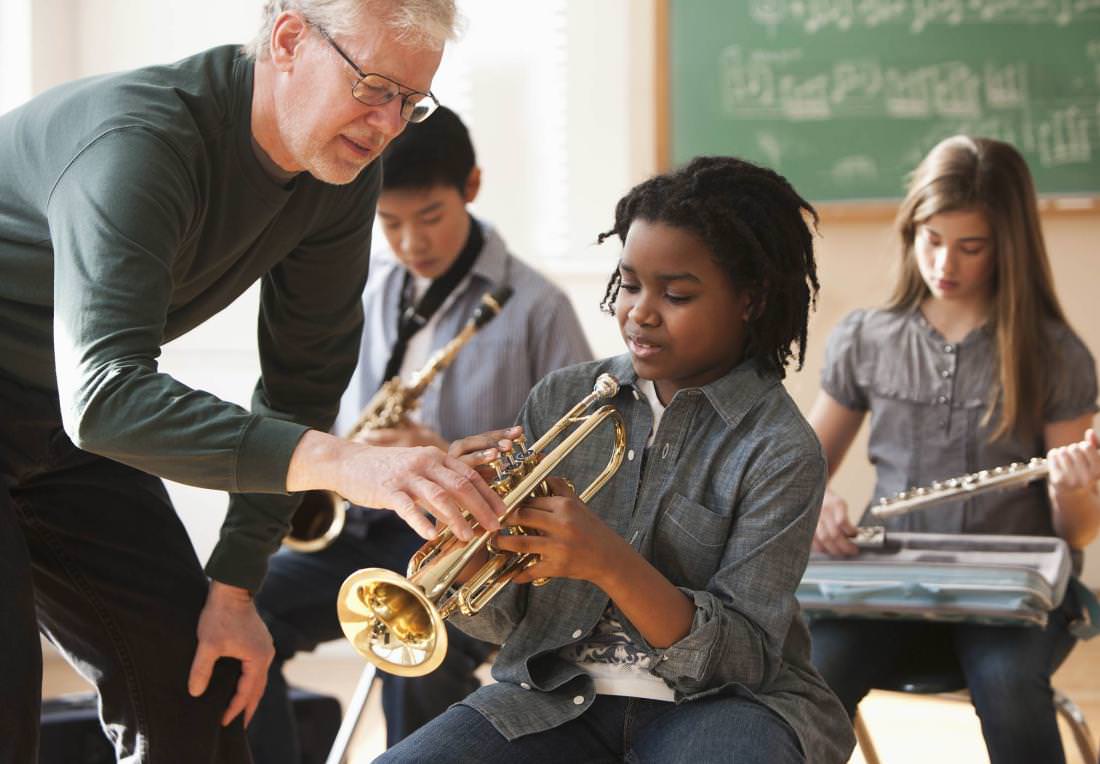For the Harford County Public Schools Title I STEAM Institute in July 2012, four Young Audiences artists were brought together to work with a group of Harford County teachers to help them develop their arts integration skills. I taught a two-session program called “The Physics of Steel Drums.” Each session combined a steel drum rehearsal and a science lesson. I worked with the group to show how learning the steel drums could be combined with understanding the science behind the drums, working through basic wave theory. The program ended with a group performance of two songs on the steel drums and with small group demonstrations of wave theory using arts integration.

Are you a musician?
As part of a year-long program to bring arts integration learning to all five Harford County Title I schools, this program showed teachers how to bring music into their classrooms by helping them begin to see themselves as musicians. By empowering the teachers with the ability to play and the confidence to perform music while learning science curriculum objectives, we can help empower them to bring that same experience to their students. In order to develop their ability to use arts integration in their teaching, it’s important for teachers to develop the confidence to take on arts projects that are new to them. The question that was explored with each group of teachers was: ”Are you a musician?” Surveys were taken at the beginning and end of this program to measure the change in how teachers felt about performing music and whether they can view themselves as musicians, even if this was their first musical instrument experience.
This program was successful in its goal of empowering teachers to have the confidence to use music performance in their classroom teaching. Specifically, this project helped to change their view of themselves as musicians and decrease their anxiety of performing in front of others as well as taking on other art projects in which they have no background.
Teachers work hard to become experts in the field of study that they teach. It is part of “what they stand on” when they teach. One of the barriers to bringing arts-integrated STEAM (Science, Technology, Engineering, Arts, and Mathematics) lessons to the classroom without the aid of a teaching artist is that teachers can be uncomfortable teaching something in which they are not an expert. Many described it as feeling vulnerable. By learning to play songs on the steel drum while learning core curriculum science objectives, the teachers agreed at the end of the program that it would be fun to try to incorporate other art forms like painting, acting, and dancing without having to be excellent at the art form themselves.
Yes. When looking at the question “Am I a musician?” we started by listing what it would take for each teacher to answer “yes”: 1. Be able to play songs well enough to perform. 2. Have the confidence to play those songs for other people. 3. Express oneself through music. Each teacher, by successfully completing the program and through feedback given on a conclusion survey, achieved all three goals.
Teaching using arts integration is a great way to bring core subject material to life in the classroom and reach all types of learners. For classroom teachers to write and teach arts-integrated lessons, it is essential that they have the confidence and ability to take on projects that will require them to learn an art form with their class or even to be guided in art forms by their students who have specific art skills. By teaching teachers to play music and to see themselves as musicians we can achieve this.
In the future, this program can be taken one step further by working with teachers with the instruments that they can get their hands on at their school to use in their classroom. During this program teachers learned how to play the steel drums and this is not an easy instrument to get a hold of for classroom work. To help address this issue, Young Audiences has prepared a box of musical instruments that each of the five Harford County Title I schools can have access to for arts-integrated lessons. I also would like to build into the program a final section where teachers can create a musical demonstration or activity for a subject of their choice.
In February 2013, I worked with four of the five Harford County Title I schools whose teachers were trained at this program. I was able to work one-on-one and in small groups with teachers to help them start writing their own arts-integrated lesson plans using these instruments as well as those that the classes can make themselves.
This toolkit article is the report of a case study conducted by Young Audiences Arts for Learning.
The original report can be found at the following page.


Leave a Comment